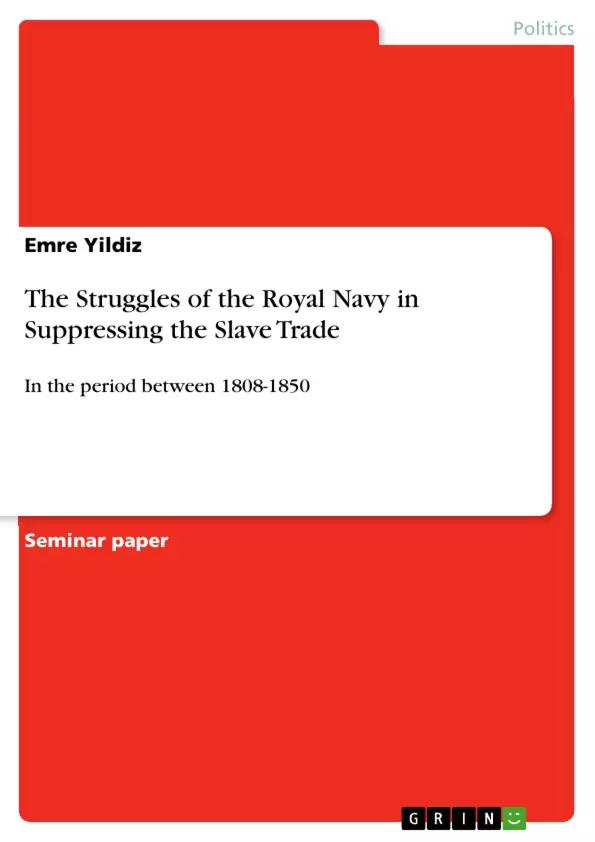Once the abolishment campaign started in 1806, the British increasingly engaged in persuading other countries to cease their trades in slaves, and further, by employing naval forces as of 1808 the British actively pursued the implementation of the prohibition laws in West Africa's Atlantic regions. However, thirty years after the Navy had started its counteracting work, by looking at the achievements of the Royal Navy, the British Parliamentary Committees saliently concluded that the suppression had been a failure so far. What were the difficulties the British Navy faced and made their activities considered as unsuccessful?
While scholars dealt thoroughly with the Atlantic Slave Trade and its suppression between 1808 and 1867, little attention has been paid to the various limitations and difficulties the Royal Navy had to operate under in the first four decades of its commence. This essay aims to provide an understanding as to why the British Navy had achieved so little initially in suppressing the forced migration of slaves from Africa to the Americas. It will look at a variety of aspects and factors, which seem to play a significant role in exacerbating the Navy's operation until 1850. It will argue that the interplay of these factors is mainly responsible for preventing the Navy from working effectively against the Atlantic Slave Traffic.
Inhaltsverzeichnis (Table of Contents)
- Introduction
- Facts and Figures
- Limitations of the Navy
- Quality and Quantity
- Health Risks and Climate Disasters
- Tactical Changes of Slave Traders
- New Ways of Shipping
- False Identities
- The Impact of Diplomacy
- The Interplay
- Diplomacy and Adaptation
- Navy's Limitation and Adaptation
- Conclusion
- Limitations and Further Research
Zielsetzung und Themenschwerpunkte (Objectives and Key Themes)
This essay aims to explain why the British Navy was initially unsuccessful in suppressing the Atlantic slave trade between 1808 and 1850. It will analyze the limitations faced by the Navy and the factors that contributed to the slave trade's persistence. The essay argues that the interplay of various aspects played a crucial role in hindering the Navy's effectiveness.
- Limitations of the British Navy's ships and personnel
- Adaptation strategies employed by slave traders
- The impact of diplomatic efforts and international agreements
- The influence of climate and health risks
- The interplay between these factors and their implications for the Navy's operations
Zusammenfassung der Kapitel (Chapter Summaries)
The first chapter introduces the context of the abolition campaign and the British Navy's efforts to enforce the slave trade ban. The second chapter presents data on the scale of the slave trade, highlighting the discrepancy between the number of slaves exported and those liberated by the Navy. The third chapter discusses the limitations faced by the British Navy, including the quality and quantity of their ships, as well as the challenges posed by the climate and health risks in West Africa.
Schlüsselwörter (Keywords)
The key topics and terms explored in this essay include the Atlantic slave trade, British Royal Navy, suppression efforts, naval limitations, slave trader adaptation, diplomacy, international relations, health risks, and climate challenges.
- Citation du texte
- Emre Yildiz (Auteur), 2013, The Struggles of the Royal Navy in Suppressing the Slave Trade, Munich, GRIN Verlag, https://www.grin.com/document/231989



